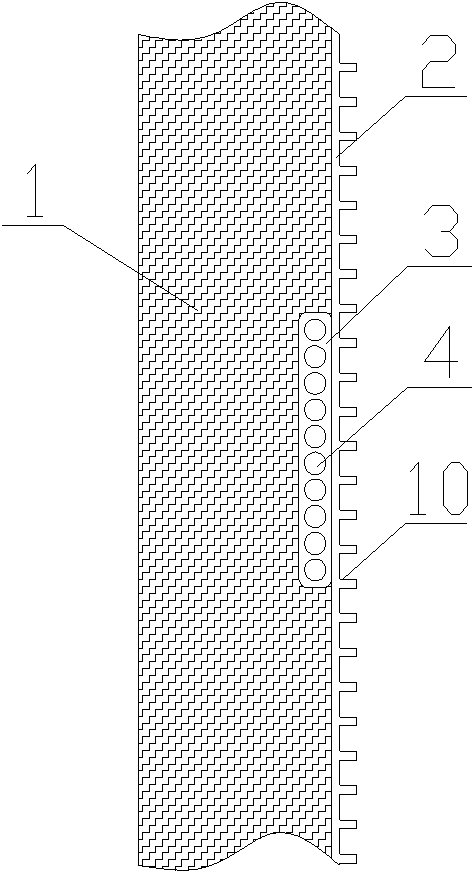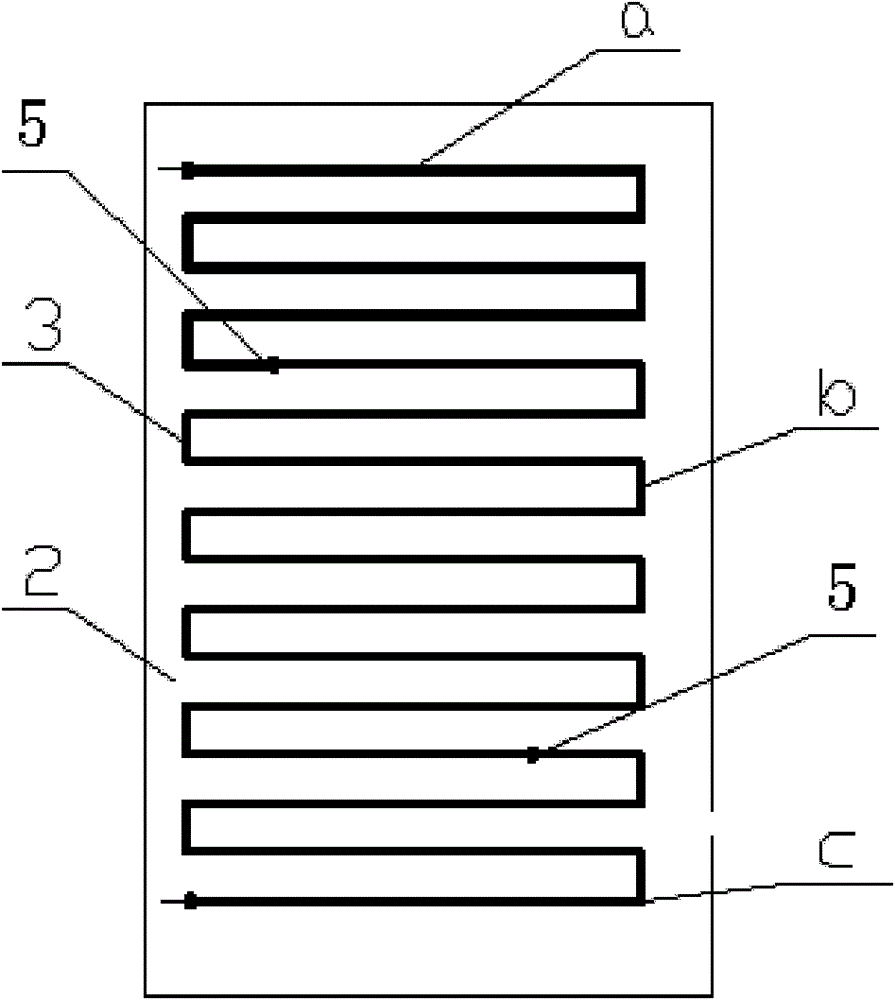Condenser
A technology for condensers and condensing sections, applied in the field of built-in condensers, can solve problems such as the influence of heat transfer efficiency, and achieve the effects of improving the convective heat transfer coefficient in the tube, improving the cooling efficiency, and improving the radiation heat transfer coefficient
- Summary
- Abstract
- Description
- Claims
- Application Information
AI Technical Summary
Problems solved by technology
Method used
Image
Examples
Embodiment 1
[0024] Embodiment 1: see figure 1 , 3. This embodiment includes a heat dissipation backplane 2 and a number of porous microchannel heat exchange flat tubes 3 that are closely attached to the inner side of the heat dissipation backplane 2 through thermal conductive silicone grease. The outer surface of the heat dissipation backplane 2 can be set to increase the heat exchange area The extended fins 10 of the present invention use heat-conducting silicone grease to reduce the contact thermal resistance, and the heat-insulating foam layer 1 presses several porous micro-channel heat-exchange flat tubes 3 to the inner side of the heat-dissipating backplane 2, and the porous micro-channel exchange There are several parallel passages 4 with circular cross-section, square cross-section or special-shaped cross-section along the same fluid flow direction in each of the hot flat tubes 3 with an equivalent diameter of 0.8-1.2 mm. In order to enhance heat exchange, the present invention can...
Embodiment 2
[0027] Example 2: see Figure 4 , this embodiment includes a heat dissipation backplane 2 and several porous microchannel heat exchange flat tubes 3 that are closely attached to the inner side of the heat dissipation backplane 2 through thermal conductive silicone grease. Pressed tightly to the inner side of the heat dissipation back plate 2, the porous microchannel heat exchange flat tubes 3 have several parallel tubes with a circular section, a square section or a special-shaped section with an equivalent diameter of 0.8-1.2mm along the same fluid flow direction. channel 4. The porous microchannel heat exchange flat tubes 3 constituting the superheated cooling section a, the two-phase cooling section b and the supercooled condensing section c of the condenser are arranged in parallel and horizontally, and each section is arranged on both sides of the porous microchannel heat exchange flat tubes 3 The distributing pipe 6 and the liquid collecting pipe 7 are connected, and th...
Embodiment 3
[0028] Example 3, see Figure 5In this embodiment, the porous microchannel heat exchange flat tubes 3 forming the superheated cooling section a, the two-phase condensing section b and the subcooled cooling section c of the condenser are vertically arranged in parallel. Other connections are the same as in Embodiment 2.
[0029] see Figure 4 , 5. The high-temperature and high-pressure refrigerant vapor from the compressor first enters the distribution pipe 6, enters the multi-hole microchannel flat tube condenser 3 under the action of the baffle plate 8, and then enters the liquid collection pipe 7. Since the refrigerant is superheated steam at this time , the specific volume is large, so more porous microchannel flat tubes are used. The tubes are arranged in parallel to ensure that the refrigerant has a sufficient flow velocity in the porous microchannel flat tube. After condensing to saturated liquid, the specific volume of the refrigerant is greatly reduced. At this time,...
PUM
 Login to View More
Login to View More Abstract
Description
Claims
Application Information
 Login to View More
Login to View More - R&D
- Intellectual Property
- Life Sciences
- Materials
- Tech Scout
- Unparalleled Data Quality
- Higher Quality Content
- 60% Fewer Hallucinations
Browse by: Latest US Patents, China's latest patents, Technical Efficacy Thesaurus, Application Domain, Technology Topic, Popular Technical Reports.
© 2025 PatSnap. All rights reserved.Legal|Privacy policy|Modern Slavery Act Transparency Statement|Sitemap|About US| Contact US: help@patsnap.com



